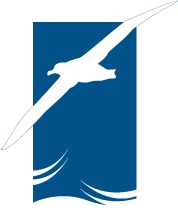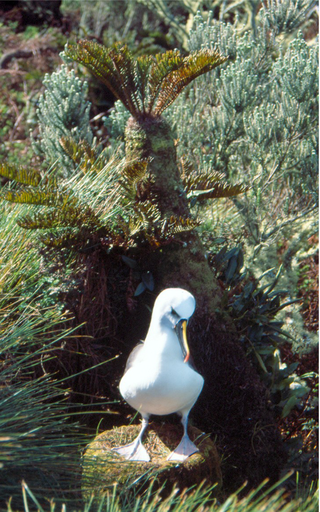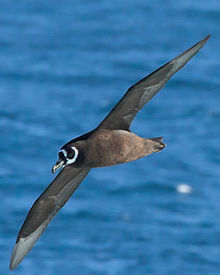
The family Procellariidae is a group of seabirds that comprises the fulmarine petrels, the gadfly petrels, the diving petrels, the prions, and the shearwaters. This family is part of the bird order Procellariiformes, which also includes the albatrosses and the storm petrels.

The Agreement on the Conservation of Albatrosses and Petrels (ACAP) is a legally binding international agreement signed in 2001 and entered into force on 1 February 2004 when South Africa ratified as the fifth Party to the Agreement.

Procellaria is a genus of Southern Ocean long-winged seabirds related to prions, and within the order Procellariiformes. The black petrel ranges in the Pacific Ocean, and as far north as Central America. The spectacled petrel is confined to the Atlantic Ocean, and the Westland petrel to the Pacific Ocean. The white-chinned and grey petrel range throughout the higher latitudes of the Southern Ocean.

The Indian yellow-nosed albatross is a member of the albatross family, and is the smallest of the mollymawks. In 2004, BirdLife International split this species from the Atlantic yellow-nosed albatross; however Clements has not split it yet, and the SACC has not either, but recognises the need for a proposal.

The Atlantic yellow-nosed albatross is a large seabird in the albatross family Diomedeidae.

The blue petrel is a small seabird in the shearwater and petrel family, Procellariidae. This small petrel is the only member of the genus Halobaena, but is closely allied to the prions. It is distributed across the Southern Ocean but breeds at a few island sites, all close to the Antarctic Convergence zone.

The Cape petrel, also called the Cape pigeon, pintado petrel, or Cape fulmar, is a common seabird of the Southern Ocean from the family Procellariidae. It is the only member of the genus Daption, and is allied to the fulmarine petrels, and the giant petrels. They are extremely common seabirds with an estimated population of around 2 million.

The Tristan albatross is a large seabird from the albatross family. One of the great albatrosses of the genus Diomedea, it was only widely recognised as a full species in 1998.

The snow petrel is the only member of the genus Pagodroma. It is one of only three birds that have been seen at the Geographic South Pole, along with the Antarctic petrel and the south polar skua, which has the most southerly breeding sites of any bird, inland in Antarctica.

The common diving petrel , also known as the smaller diving petrel or simply the diving petrel, is a diving petrel, one of four very similar auk-like small petrels of the southern oceans. It is native to South Atlantic islands and islands of the subantarctic southern Indian Ocean, islands and islets off New Zealand and south-eastern Australian islands.

The white-chinned petrel also known as the Cape hen and shoemaker, is a large shearwater in the family Procellariidae. It ranges around the Southern Ocean as far north as southern Australia, Peru and Namibia, and breeds colonially on scattered islands. The white-chinned petrel was formerly considered to be conspecific with the spectacled petrel.

The Kerguelen petrel is a small slate-grey seabird in the family Procellariidae. It is the only species placed in the genus Aphrodroma. It is a pelagic, circumpolar seabird of the Southern Ocean. It breeds on islands in the southern Atlantic and Indian Oceans.

The broad-billed prion is a small pelagic seabird in the shearwater and petrel family, Procellariidae. It is the largest prion, with grey upperparts plumage, and white underparts. The sexes are alike. It ranges from the southeast Atlantic to New Zealand mainly near the Antarctic Convergence. In the south Atlantic it breeds on Tristan da Cunha and Gough Island; in the south Pacific it breeds on islands off the south coast of South Island, New Zealand and on the Chatham Islands. It has many other names that have been used such as blue-billed dove-petrel, broad-billed dove-petrel, long-billed prion, common prion, icebird, and whalebird.
The Polynesian storm petrel is a species of seabird in the family Oceanitidae. It is the only species placed in the genus Nesofregetta. This species is markedly polymorphic, consisting of several subspecies. At one time the light-colored variety were even considered a species on their own. However, subspecies are not generally accepted today.

The grey petrel, also called the brown petrel, pediunker or grey shearwater is a species of seabird in the Procellariidae, or petrel family. It is pelagic and occurs in the open seas of the Southern Hemisphere, mainly between 32°S and 58°S.
















